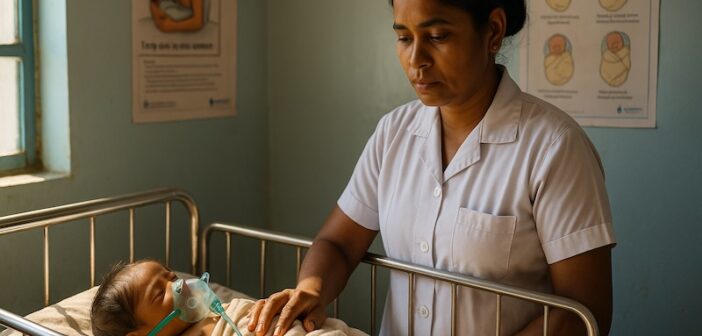TL;DR Infant deaths in India remain high, especially in the first 29 days, mostly due to prematurity, birth complications, and infections. Rural areas report a higher number of deaths from infections, while urban areas report more from congenital anomalies. ‘Ill-defined’ causes have risen in recent years.
Context
Deaths in the first year of life, particularly within the first 29 days, are largely preventable but remain a major public health concern, often resulting from prematurity, birth complications, and infections. As of 2023, infants aged up to 29 days accounted for 2.8% of total deaths in the country, with 1.6% males and 1.2% females, underscoring the high risk even in the earliest days of life. If infants up to one year are considered, female infant deaths make up 4.6% of total female deaths, slightly higher than 4.3% among males, highlighting persistent vulnerabilities and the urgent need for strengthened neonatal and infant care interventions.
Who compiles this data?
The data on infant mortality presented in the Children in India 2025 report is sourced from the Sample Registration System (SRS) – Causes of Death in India report. The SRS is maintained by the Office of the Registrar General & Census Commissioner, India, under the Ministry of Home Affairs. It provides nationally representative estimates of mortality and its causes through large-scale demographic surveys.
Where can I download clean & structured data related to deaths in India?
A cleaned, structured, and ready-to-use dataset detailing the major causes of infant deaths is available for download on Dataful. Dataful also features a collection of datasets on registered and medically certified deaths, classified by state, disease groups, and more.
Key Insights
- Prematurity and low birth weight are consistently the number one cause of death for newborns (<29 days). On average, it accounted for approximately 46% of the neonatal deaths reported in India during the last decade.
- Prematurity, Birth Asphyxia, and Infections, including Sepsis and Pneumonia, consistently account for 3 in 4 deaths among newborns.
- The share of deaths attributed to ‘Ill-defined or cause unknown’ for infants (<1 year) has increased from below 5% up until 2018-20 and doubled in the last three years, possibly due to COVID-19.
- The share of deaths from preventable or treatable infections such as Pneumonia and Diarrhoeal diseases is higher in rural areas throughout the years and irrespective of age group.
- Deaths from Other Non-Communicable Diseases and Congenital anomalies are more prominent in urban areas, which may be due to greater availability of advanced diagnostic facilities in cities.
Why does it matter?
Infant mortality is a key health indicator and a measure of progress toward SDG 3.2, which aims to end preventable newborn and under-5 deaths. Understanding its causes helps design targeted interventions, strengthen neonatal care, and address rural-urban disparities in healthcare access.
Key numbers
- Neonatal deaths (<29 days): ~46% due to prematurity/low birth weight.
- Prematurity, birth asphyxia, infections → ~75% of newborn deaths.
- Ill-defined causes: 2x since 2019-21.
- Rural areas: Higher deaths from preventable infections.



